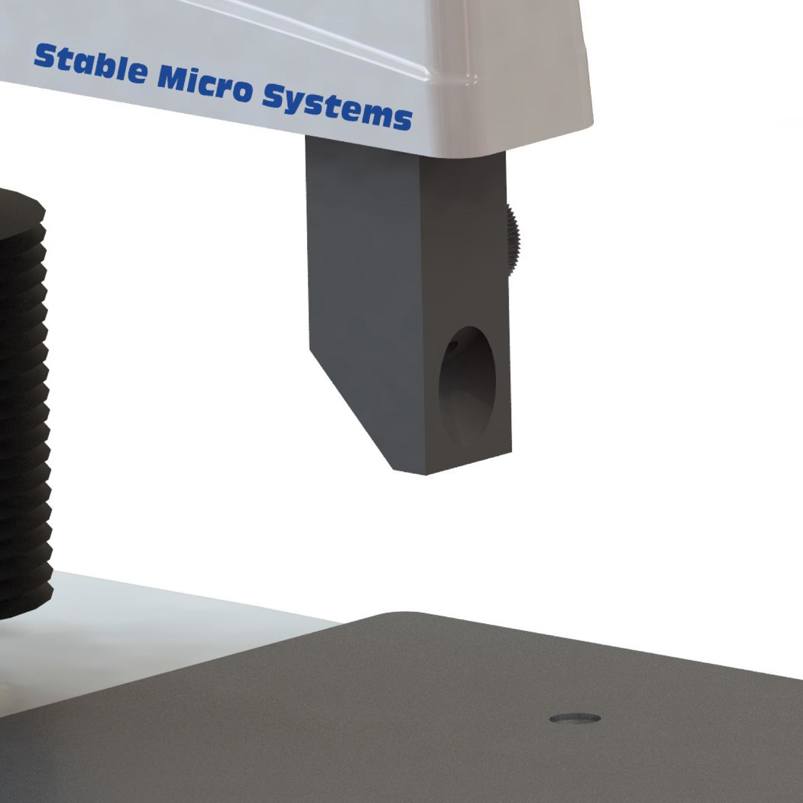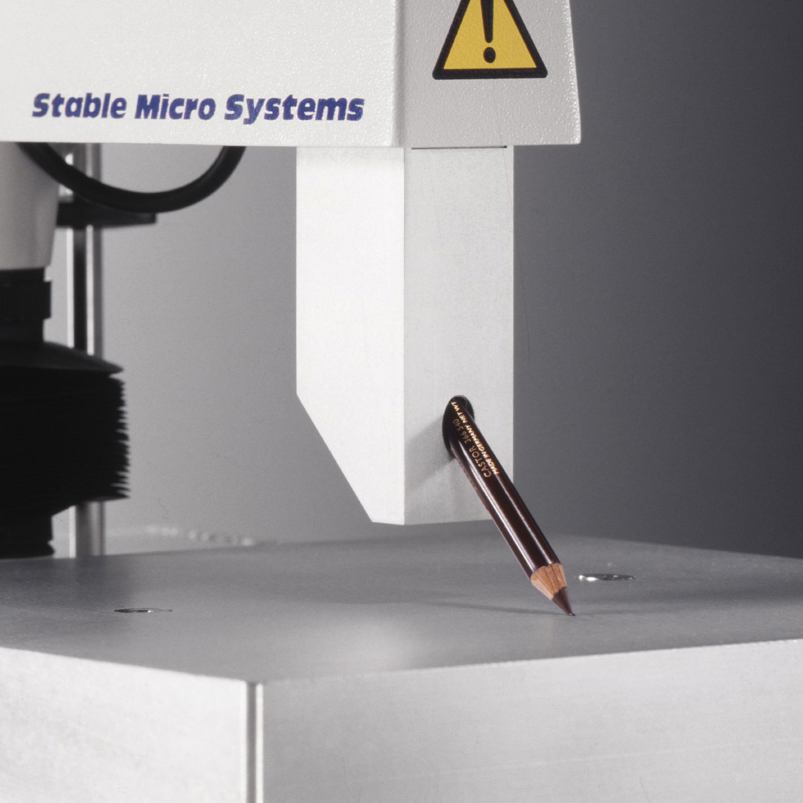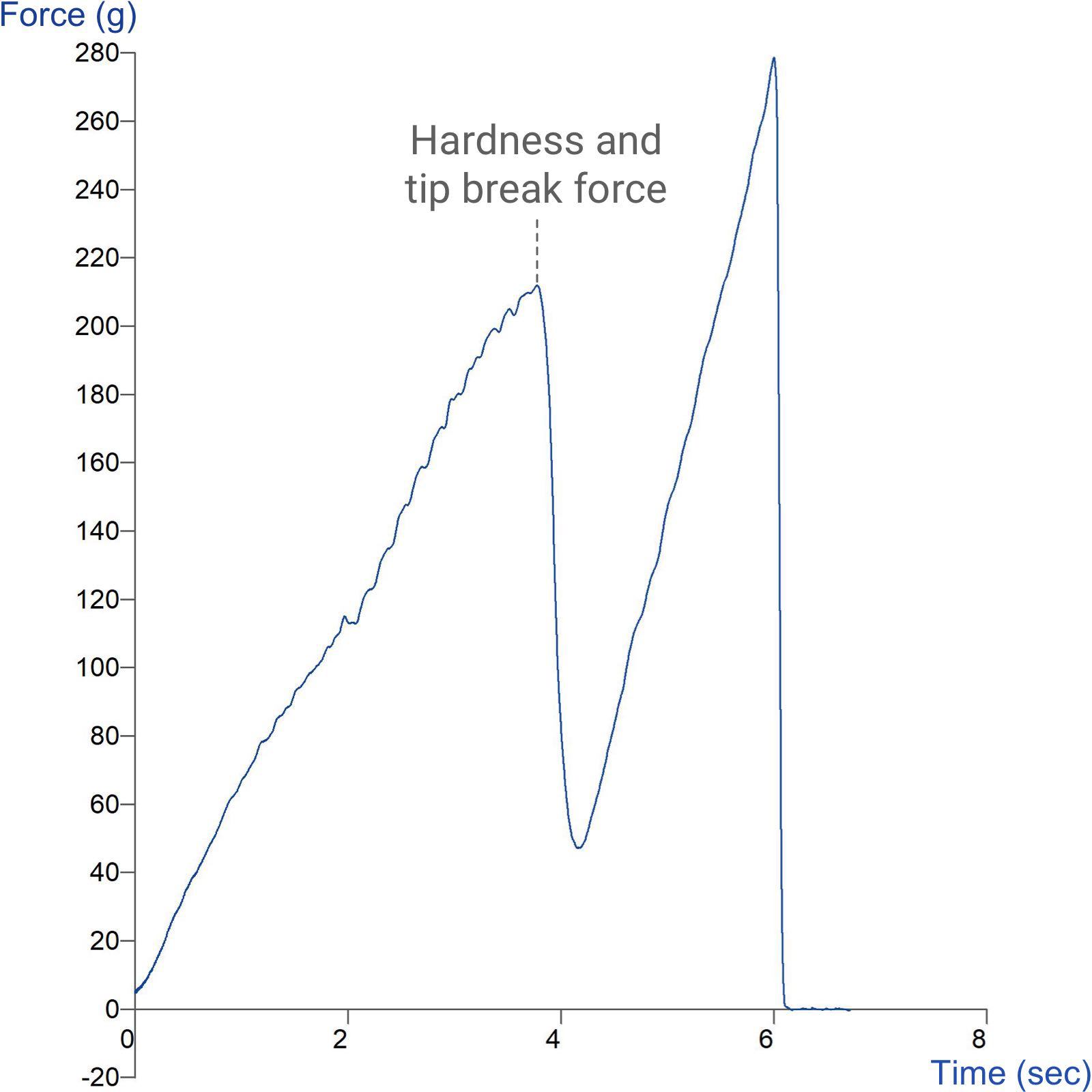Product overview
The hardness or rigidity of a beauty pencil core is controlled by waxes in the formulation which can be adjusted to the desired melting point of the finished product. The rigidity of a wax pencil core must allow the tip to be sharpened to a point to provide a 'defined line' application without scratching the eye of the user. The product developer must tackle the challenge of creating a product which achieves this but does not become crumbly or brittle after prolonged or low-temperature storage.
The Eye Pencil Rig provides the means to quantitatively measure the hardness of pencil tips such as those for eye or lip-lining products. Results will assess such process variables as the modification of wax content or product quality as a result of extreme temperature conditions or shelf life.
How does the Eye Pencil Rig work?
Ideal sample form
Material presented in pencil form.
Technical information
Installation
Full installation instructions are provided within the Education Zone of the latest Exponent/Connect software version and on the technical information sheet accompanying this product.
Chemical compatibility
Stable Micro Systems probes and attachments are commonly made from four materials: anodised aluminium (AA6082 T6), stainless steel (316 T), Delrin (acetyl copolymer) and Perspex (polycarbonate).
In general use, probes and attachments made from these materials will be suitable for testing food products and inert non-food materials.
The four materials listed above are not universally resistant to all types of chemicals and as such the compatibility of the probe/attachment material with the product (to be tested) must be established to prevent damage to the probes and attachments. If the compatibility of the product with the probe is unknown to the customer then the chemical information about the product (Material Safety Data Sheet or Product Data Sheet) should be submitted to Stable Micro Systems. Stable Micro Systems will then assess the suitability of the probe/attachment material for use with the product and advise accordingly. If this advice is not sought then Stable Micro Systems will not accept liability for probes/attachments damaged by chemical attack from the product being tested.
Cleaning and maintenance
All probes and attachments may be cleaned in warm (or hand hot) water using a mild detergent. A soft brush may be used but abrasive cleaning aids should be avoided. Stable Micro Systems products should not be microwaved or cleaned in a dishwasher.
Screw threads should be lightly lubricated after drying using a light lubricant, e.g. petroleum jelly, mineral oil. This will aid the fitting and unscrewing of the item. Each component of a probe or attachment should be wrapped separately when stored, to avoid scratching or chipping. This will safeguard against any unnecessary damage to the accessory.



